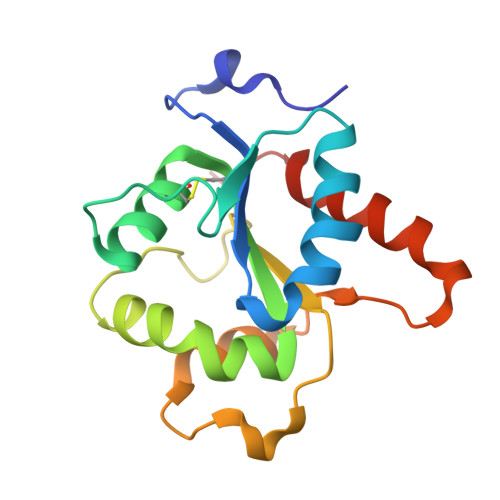Modulation of Toll-like receptor 1 intracellular domain structure and activity by Zn 2+ ions.
Lushpa, V.A., Goncharuk, M.V., Lin, C., Zalevsky, A.O., Talyzina, I.A., Luginina, A.P., Vakhrameev, D.D., Shevtsov, M.B., Goncharuk, S.A., Arseniev, A.S., Borshchevskiy, V.I., Wang, X., Mineev, K.S.(2021) Commun Biol 4: 1003-1003
- PubMed: 34429510
- DOI: https://doi.org/10.1038/s42003-021-02532-0
- Primary Citation of Related Structures:
7NT7, 7NUW, 7NUX - PubMed Abstract:
Toll-like receptors (TLRs) play an important role in the innate immune response. While a lot is known about the structures of their extracellular parts, many questions are still left unanswered, when the structural basis of TLR activation is analyzed for the TLR intracellular domains. Here we report the structure and dynamics of TLR1 toll-interleukin like (TIR) cytoplasmic domain in crystal and in solution. We found that the TLR1-TIR domain is capable of specific binding of Zn with nanomolar affinity. Interactions with Zn are mediated by cysteine residues 667 and 686 and C667 is essential for the Zn binding. Potential structures of the TLR1-TIR/Zn complex were predicted in silico. Using the functional assays for the heterodimeric TLR1/2 receptor, we found that both Zn addition and Zn depletion affect the activity of TLR1, and C667A mutation disrupts the receptor activity. Analysis of C667 position in the TLR1 structure and possible effects of C667A mutation, suggests that zinc-binding ability of TLR1-TIR domain is critical for the receptor activation.
Organizational Affiliation:
Shemyakin-Ovchinnikov Institute of Bioorganic Chemistry RAS, Moscow, Russia.














